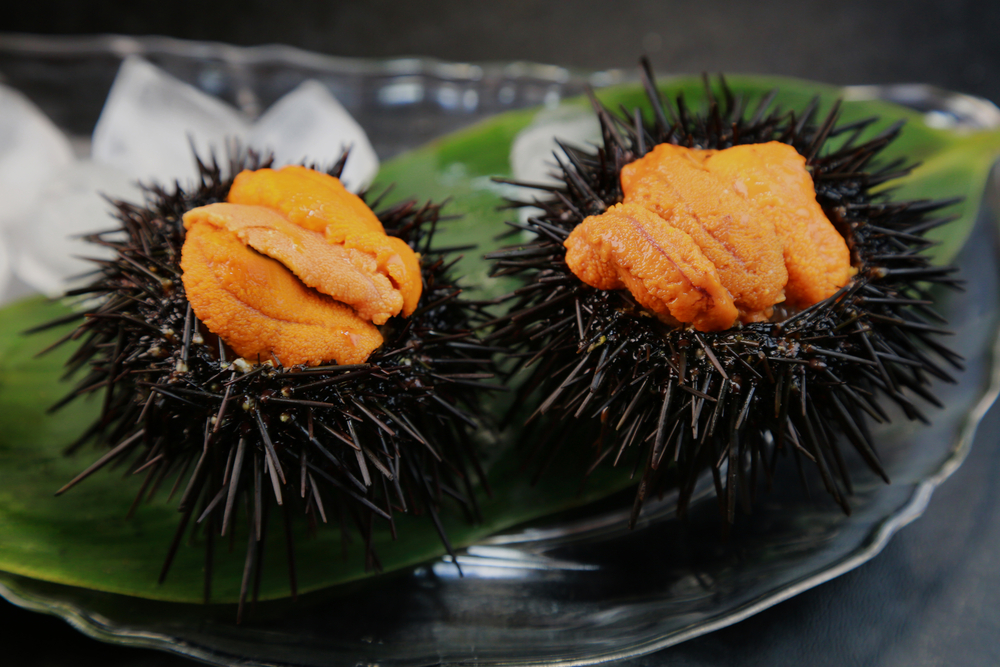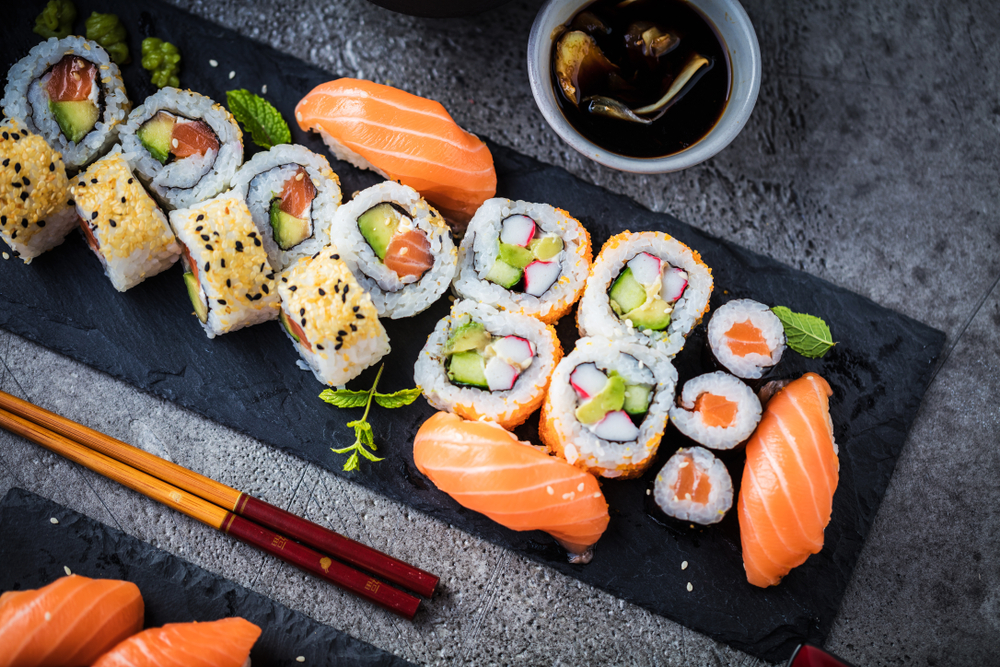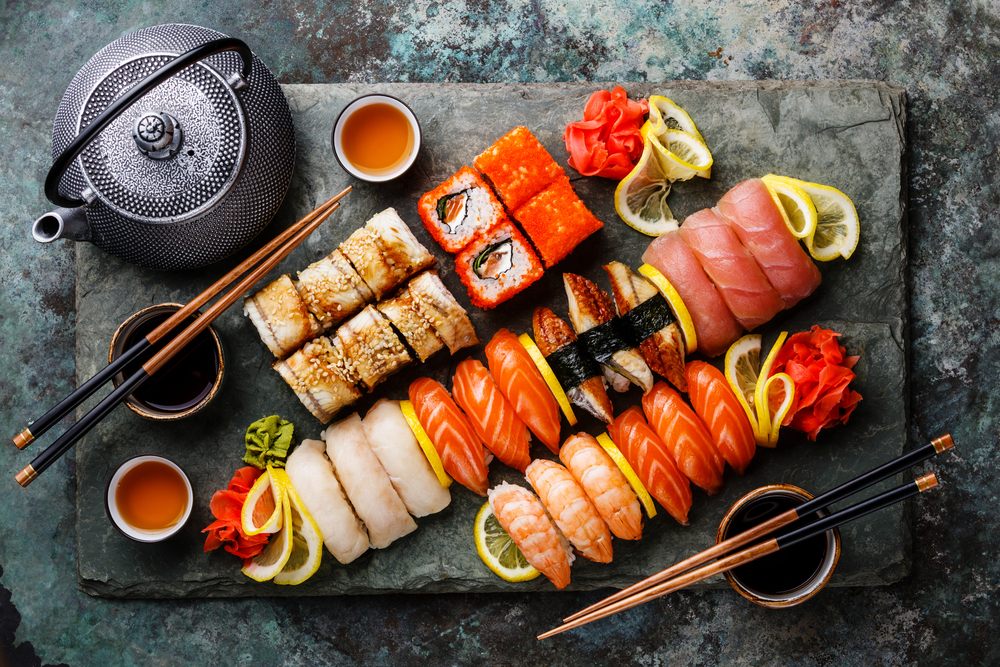Uni, also known as sea urchin, is a delicacy that has been enjoyed in many parts of the world for centuries. It is a popular ingredient in Japanese cuisine and can be found in sushi, sashimi, and other traditional dishes.
But what does uni taste like? To put it simply, uni has a sweet and briny flavor, with a buttery and creamy texture that melts in your mouth.

Understanding uni is essential to appreciate its unique taste and texture fully. Uni is the edible part of the sea urchin, which is a spiny marine animal found in oceans worldwide.
The flavor and texture of uni can vary depending on the species of sea urchin, the location where it was harvested, and the time of year it was collected.
However, most people describe uni as having a rich and savory taste, with a slightly sweet and salty flavor that lingers on the palate.
Key Takeaways
- Uni is a delicacy that is enjoyed in many parts of the world, particularly in Japanese cuisine.
- Uni has a sweet and briny flavor, with a buttery and creamy texture that melts in your mouth.
- The flavor and texture of uni can vary depending on the species of sea urchin, the location where it was harvested, and the time of year it was collected.
Understanding Uni
Uni, also known as sea urchin, is a delicacy enjoyed by many around the world. Uni is the Japanese word for sea urchin roe, which is the gonads or reproductive organs of the sea urchin.
It is considered a luxury food item and can be quite expensive.
When consumed raw, sashimi style, uni has a unique flavor and texture that can be described as rich, buttery, and slightly sweet. However, it is not for everyone, as some people find the taste too strong or overpowering.
Freshness is key when it comes to uni. It should be firm and bright colored without any signs of seepage and, ideally, still tiled or crisscrossed in its original packaging.
Once harvested, it begins to deteriorate quickly, so it is important to consume it as soon as possible.
Uni is harvested from sea urchins, which are spiny sea creatures found in oceans around the world. The harvesting process can be quite challenging, as sea urchins are difficult to catch and can be dangerous to handle.
In conclusion, uni is a delicacy with a unique flavor and texture that is not for everyone. Freshness is key, and it should be consumed as soon as possible after harvesting.
Taste and Texture of Uni
Uni, also known as sea urchin, is a delicacy that is enjoyed by many people around the world. As someone who has tried uni, I can say that the taste and texture of this dish is quite unique and may take some getting used to.
In terms of taste, uni has a complex flavor profile that is difficult to describe. Many people describe it as having an umami flavor, which is a savory and meaty taste.
However, uni also has a slightly sweet taste that is reminiscent of custard. The sweetness is not overpowering and is balanced by the savory taste.
Uni also has a rich and creamy texture that is similar to butter. When prepared correctly, uni should melt in your mouth and have a slightly bouncy texture.
However, if uni is not fresh or has been sitting for too long, it can have a slimy texture that is not pleasant.
It is important to note that uni is an acquired taste and may not be for everyone. Some people describe the taste as bitter or metallic, while others find it to be too briny or fishy.
However, for those who enjoy the taste of uni, it is a truly unique and delicious dish that is often compared to foie gras.
Overall, the taste and texture of uni is a delicate balance of sweet and savory flavors and a creamy, buttery texture.
It is a dish that is best enjoyed fresh and when prepared correctly, it can be a truly unforgettable culinary experience.
Uni in Japanese Cuisine
Uni, also known as sea urchin, is a delicacy in Japanese cuisine that has become increasingly popular in sushi restaurants worldwide.
As a sushi lover, I have had the opportunity to taste uni in various forms, from raw to cooked, and I can say that it is a unique and acquired taste.
In Japan, uni is traditionally served as nigiri sushi, sashimi, or as a topping over seafood dishes. Nigiri sushi is a small ball of sushi rice topped with a slice of raw fish or seafood, including uni.
Sashimi is thinly sliced raw fish or seafood served without rice. Uni is also used in other dishes, such as uni pasta, where it is often combined with butter, garlic, and cream to create a rich and flavorful sauce.
When it comes to taste, uni has a distinct umami flavor that is both sweet and slightly bitter. It has a creamy, custard-like texture that melts in your mouth.
The taste can vary depending on the type of uni and how it is prepared. The most common type of uni is the Murasaki uni, which has a mild and sweet flavor.
Bafun uni, on the other hand, has a more assertive umami flavor with a hint of bitterness.
Uni can be enjoyed in various forms, including raw, cooked, and grilled. Raw uni is often served as nigiri sushi or sashimi, where it is paired with soy sauce and wasabi.
Cooked uni is typically used in dishes such as uni pasta and risotto, where it is added towards the end of the cooking process.
Grilled uni is a popular way to enjoy it in Japan, where it is often served with a sprinkle of salt and a squeeze of lemon.
Overall, uni is a unique and delicious ingredient that adds a distinct flavor and texture to Japanese cuisine.
Whether you are a sushi lover or not, I highly recommend giving uni a try in various forms to experience its complex and delightful taste.
Health Benefits of Uni

Uni, also known as sea urchin, is not only a tasty delicacy but also a healthy food option. Here are some of the health benefits of uni:
Rich in Nutrients
Uni is a nutrient-dense food that is rich in vitamins, minerals, and protein. It is an excellent source of iodine, calcium, and omega-3 fatty acids. Additionally, it contains vitamin A, vitamin E, and carbohydrates.
Good for Heart Health
Uni is a healthy food option for people concerned about their heart health. It is low in fat and high in omega-3 fatty acids, which can help reduce inflammation and lower the risk of heart disease.
Helps with Weight Loss
Uni is a low-calorie food that can help with weight loss. It is also high in protein and fiber, which can help keep you feeling full for longer periods.
Boosts Immune System
Uni is an excellent source of antioxidants that can help boost the immune system. It contains vitamin A, which is essential for maintaining healthy skin and mucous membranes.
Versatile
Uni is a versatile ingredient that can be used in a variety of dishes, including sushi, pasta, and risotto. It has a unique flavor that can add depth and complexity to any dish.
In conclusion, uni is not only a delicious food option but also a healthy one.
It is rich in nutrients, good for heart health, helps with weight loss, boosts the immune system, and is a versatile ingredient that can be used in a variety of dishes.
Uni as a Seafood Delicacy
As a seafood delicacy, uni has a unique taste and texture that sets it apart from other seafood. Uni is the edible part of a sea urchin, and it has a soft, creamy texture that melts in your mouth.
The flavor of uni is described as briny and lightly sweet with delicate traces of the ocean.
Uni is considered a delicacy in many parts of the world, and it is often compared to other luxury foods like caviar and foie gras. This is because uni is expensive and not readily available in all areas.
The quality of uni is determined by several factors, including age, freshness, and color. High-quality uni should not have a fishy taste or smell, and it should be firm but melt in your mouth.
The color of uni can vary from pale yellow to vivid orange, and it is often an indicator of the quality of the uni.
Uni is also a nutritious food, and it is often included in a healthy diet. It is rich in protein, vitamins, and minerals, making it a great addition to any meal.
Overall, uni is a unique and flavorful delicacy that is highly prized in many cuisines. Its taste and texture make it a popular choice for sushi and sashimi, but it can also be enjoyed in a variety of other dishes.
When looking for quality uni, it’s important to consider factors like age, freshness, and color to ensure that you’re getting the best possible experience.
Storing and Preparing Uni

As a delicacy, uni is best enjoyed fresh. It is important to store uni properly to maintain its quality and taste. When purchasing uni, make sure it is fresh and has a briny, ocean-like smell. If the uni smells off or has a strong ammonia smell, it is likely not fresh and should be avoided.
Inspect the texture: Fresh uni should be firm to the touch, with a slightly bouncy texture. If the uni feels slimy or mushy, it has likely been sitting for too long and is not fresh.
To store uni, wrap it tightly in plastic wrap and keep it in the coldest part of your refrigerator. Uni can be stored for up to two days, but it is best to consume it as soon as possible.
If you are unable to consume the uni within two days, it can be frozen. To freeze uni, place it in a covered container with a small amount of brine (1 teaspoon of salt per 1 cup of water) and store it in the freezer for up to three months.
Before preparing uni, rinse it gently under cold running water to remove any sand or debris. To enhance the flavor of uni, you can soak it in a solution of water and alum for 10-15 minutes before rinsing it again.
Alum helps to firm up the texture and bring out the natural sweetness of the uni.
Uni can be enjoyed in a variety of ways. It can be served raw, as sashimi or nigiri sushi, or cooked in dishes such as risotto or spaghetti.
To serve raw uni, cut it into bit-sized pieces and serve it on a bed of sushi rice. Uni can also be served with a drizzle of olive oil, a squeeze of lemon juice, and a sprinkle of finely chopped garlic or herbs.
Uni pairs well with vegetables such as cucumber, avocado, or radish.
When preparing uni, it is important to avoid adding too many additives or overpowering flavors that can mask its delicate taste.
Uni has a rich, buttery, and slightly sweet flavor that can be enjoyed on its own or with simple accompaniments.
Uni Around the World
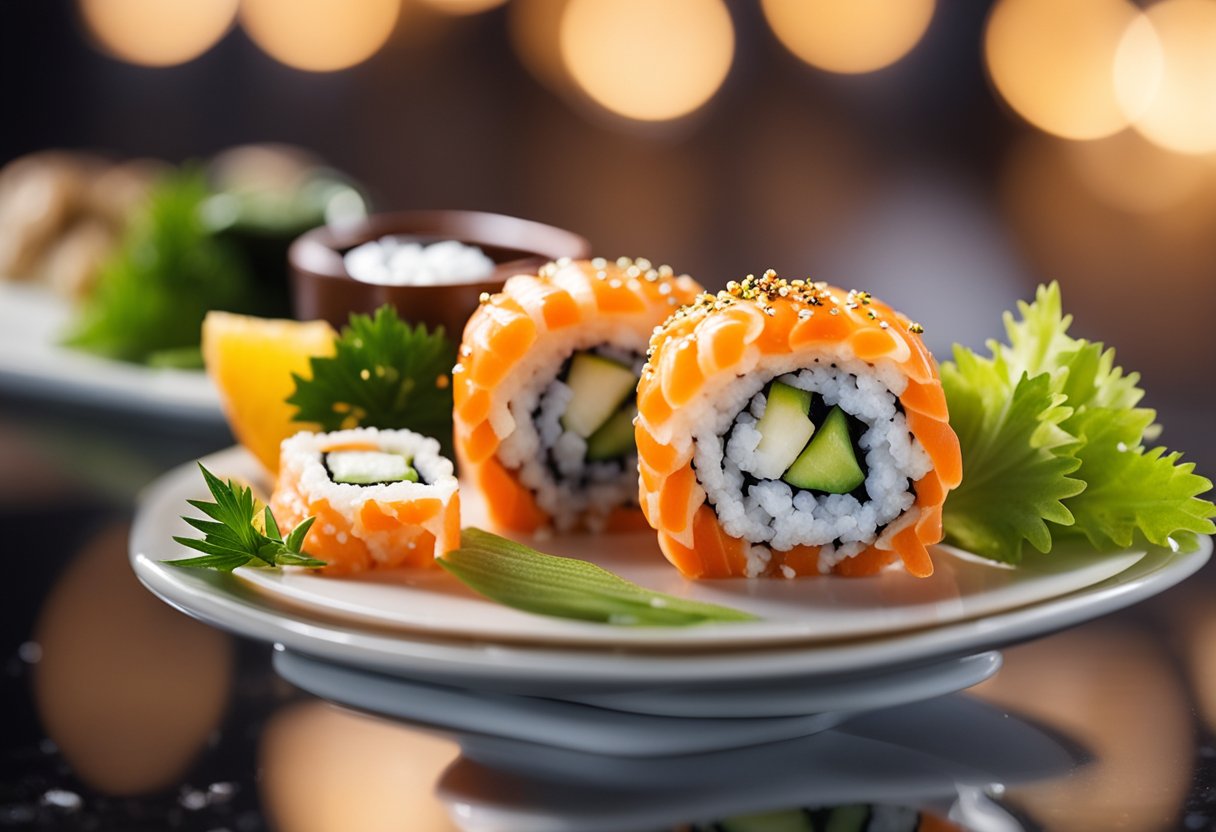
Uni, or sea urchin, is a delicacy enjoyed by many around the world. Its unique flavor and texture make it a popular ingredient in many dishes.
Uni can be found in various locations, including the west coast and east coast of the United States, California, and the Mediterranean.
On the west coast of the United States, uni is commonly found in California. The California uni is known for its sweet and buttery flavor, which is a result of the cold Pacific waters where it is harvested.
It has a bright orange color and a creamy texture, making it a popular ingredient in sushi and other seafood dishes.
On the east coast of the United States, uni is less common but still enjoyed by many. The east coast uni is typically harvested in Maine and is known for its briny flavor and firm texture.
It is often served as a standalone dish or used as a topping for pasta and other dishes.
In the Mediterranean, uni is a popular ingredient in Italian and French cuisine. The Mediterranean uni is known for its delicate flavor and creamy texture.
It is typically served raw or lightly cooked and is often paired with pasta, risotto, or other seafood dishes.
Overall, uni is a versatile ingredient that can be enjoyed in various dishes around the world. Its unique flavor and texture make it a popular delicacy for seafood lovers.
Uni in Popular Culture
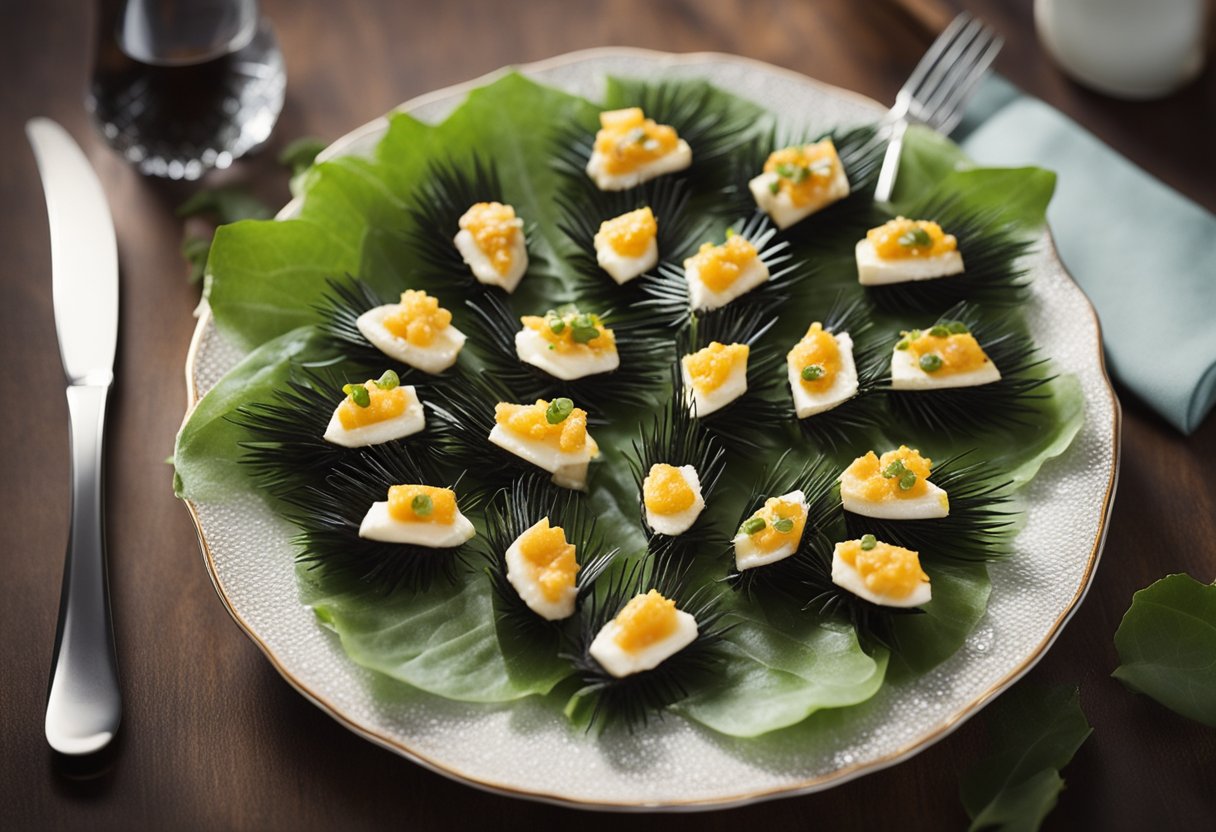
Uni, also known as sea urchin, has been a delicacy in Japan for centuries. In recent years, it has gained popularity in the Western world, especially among foodies who enjoy exploring new and unique flavors.
Uni has also been a topic of interest in popular culture. In the hit TV show “Top Chef,” contestants were challenged to create a dish using uni as the main ingredient.
The judges praised the contestants who were able to incorporate the delicate flavor of uni into their dishes.
Uni has also been featured in various food blogs and magazines, with writers describing its rich and creamy flavor.
Some have even compared it to butter or described it as having a slightly nutty taste.
While uni is a delicacy in many parts of the world, it may not be for everyone. Those who are squeamish about trying new foods may be put off by its appearance, which can be described as slimy or gelatinous.
Additionally, those who have tried balut, a fertilized duck egg that is a popular street food in the Philippines, may find uni to be a more palatable option.
Despite its unique flavor and texture, uni has also been incorporated into more mainstream dishes.
For example, some sushi restaurants offer a “green uni” roll, which combines uni with avocado and cucumber for a refreshing and flavorful dish.
Overall, uni’s popularity in popular culture is a testament to its unique flavor and versatility in the culinary world.
Frequently Asked Questions
How does uni taste compared to other seafood?
Uni has a unique flavor that is often described as rich, buttery, and slightly sweet. It has a distinct taste that sets it apart from other seafood.
Some people compare the taste of uni to caviar or foie gras, while others find it too strong or overpowering.
What are the health benefits of eating uni?
Uni is a good source of protein, vitamins, and minerals. It is rich in omega-3 fatty acids, which are essential for brain and heart health.
Uni also contains antioxidants that can help protect against cancer and other diseases.
What are some common ways to prepare uni?
Uni can be eaten raw or cooked. It is often served as sushi or sashimi, but can also be used in pasta dishes, risottos, and other recipes. Some people like to eat uni with soy sauce, wasabi, or other condiments.
What is the texture of uni?
Uni has a creamy, smooth, and slightly chewy texture that melts in your mouth. The texture can vary depending on how the uni is prepared and where it comes from.
Can you tell if uni is bad by its taste?
Yes, you can tell if uni is bad by its taste. If uni has a sour or ammonia-like taste, it is likely spoiled and should not be eaten.
Where can I find high-quality uni in my area?
High-quality uni can be found at specialty seafood markets, sushi restaurants, and online retailers. It is important to buy uni from a reputable source to ensure that it is fresh and safe to eat.


